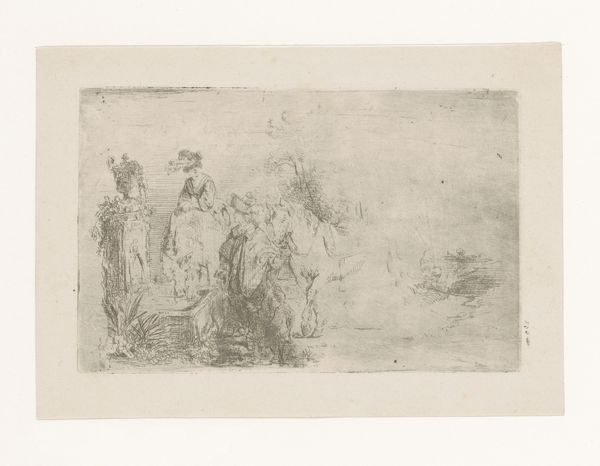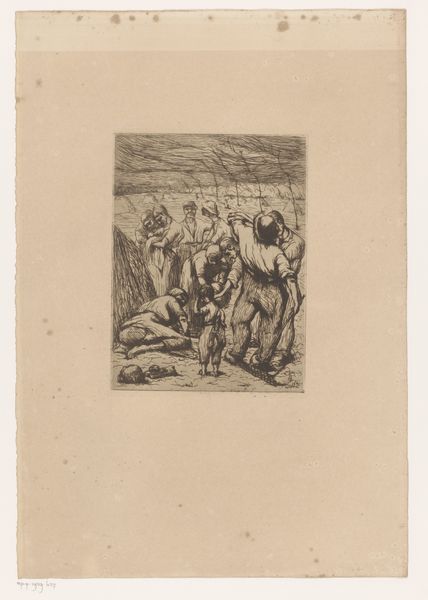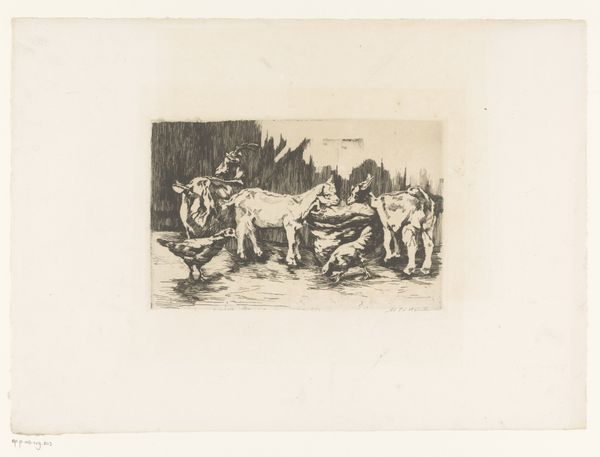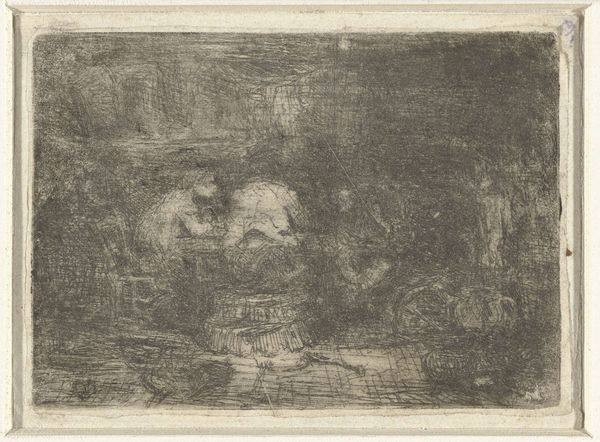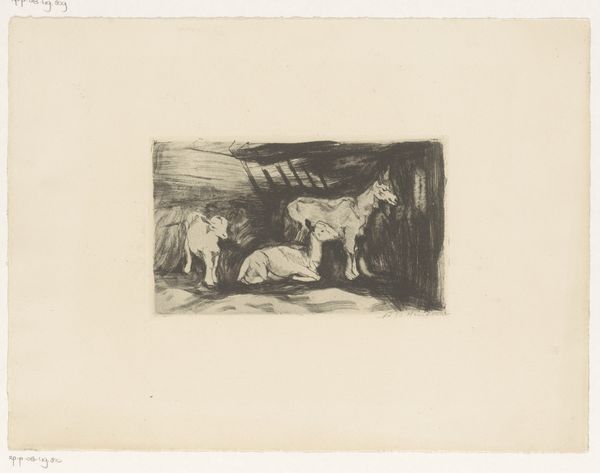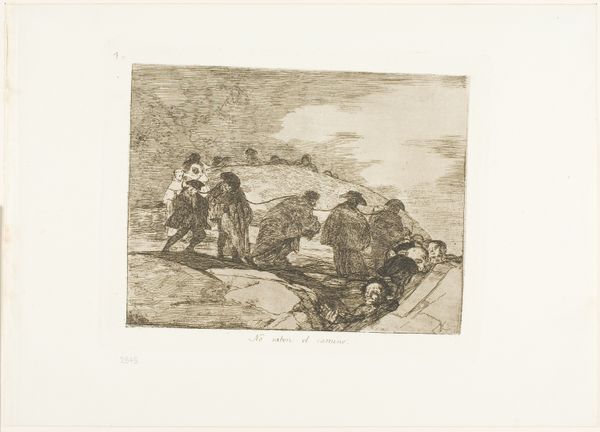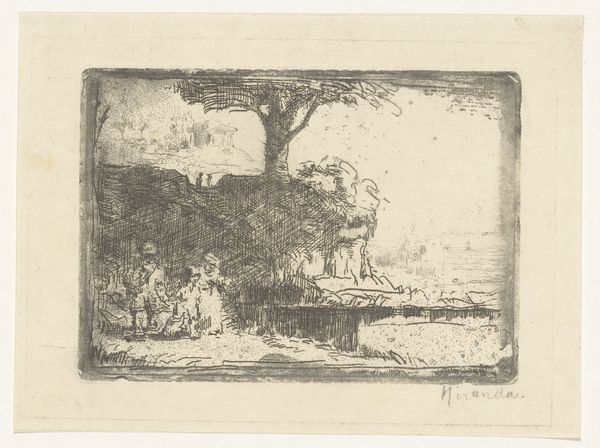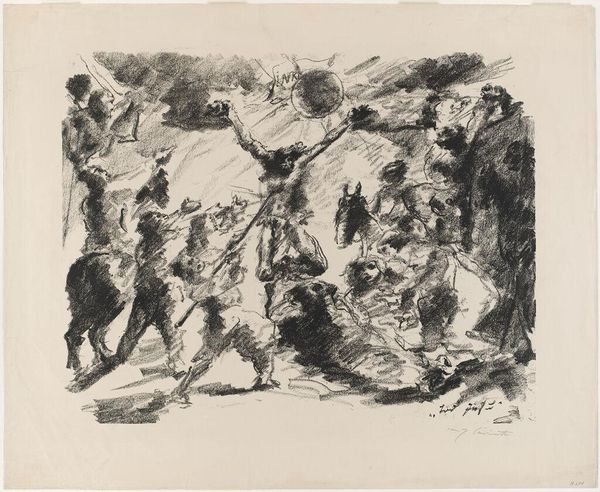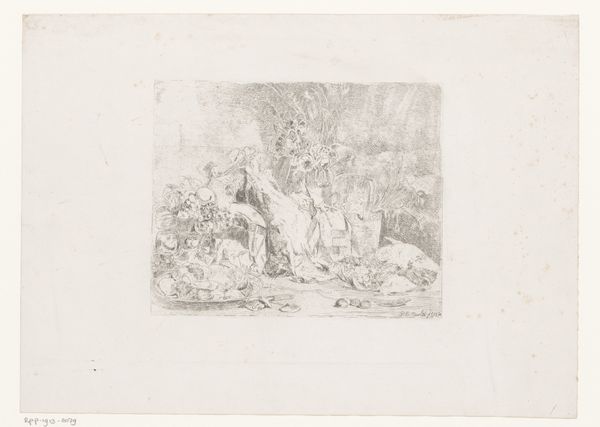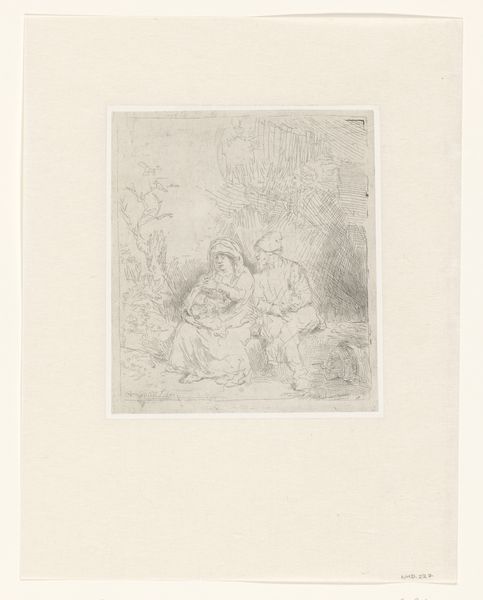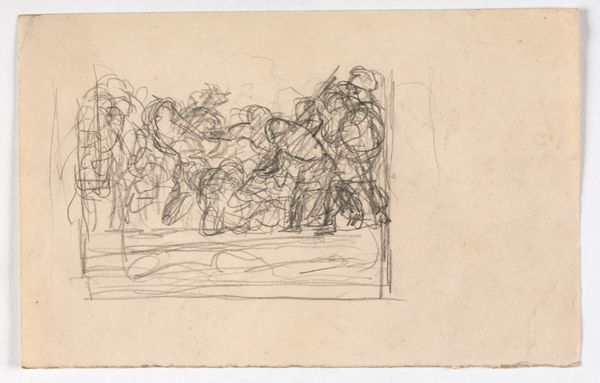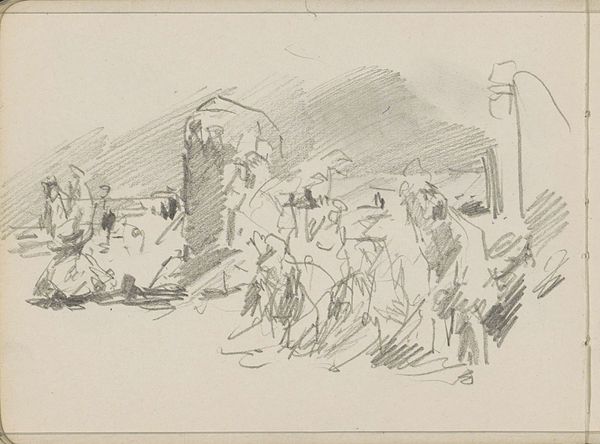
Dimensions: height 240 mm, width 297 mm
Copyright: Rijks Museum: Open Domain
Curator: Looking at "Studie van zes baadsters" (Study of Six Bathers) made by Henri Fantin-Latour around 1903-1904, what strikes you most? Editor: The initial feeling is like catching a glimpse of a secret world. There’s a dreamy quality, almost ethereal. Like they're not quite in our realm, these women emerging from the shadowy forest edge... a fragile and sensuous glimpse. Curator: Fantin-Latour was fascinated by the nude female form, and these drawings—this one is graphite on paper—offered him a way to explore it. It’s part of a series where he's wrestling with the tension between Realism and the growing trend toward more abstract, Impressionistic styles. Editor: Yes, the graphite is put to work to great effect. The almost smudgy quality to the drawing really reinforces that feeling of ephemerality, that this moment might dissolve. I feel like I'm recalling the work, instead of actually looking at it directly. Do you think that it relates at all to the academic figure drawing of his time? Curator: Absolutely, but with a twist. He’s engaging with academic traditions – the idealized nude, the classical references – but pulling it in a more personal direction. These aren’t goddesses on Olympus; they’re women existing in a space between reality and imagination. His depictions often sidestepped salon conventions by injecting modern ambivalence and an individual point of view, something less performative. Editor: It almost feels radical in its subtlety. We're so used to spectacle, but here we're asked to simply be present with these figures, and the emotional restraint of this picture is the opposite of our present world! The sketchiness emphasizes that. There’s no firm declaration being made, no manifesto. Instead, it’s like a question mark hanging in the air. Curator: Precisely. And that ambiguity is something Fantin-Latour explored in his other works too, his flower paintings or group portraits. There's often this undercurrent of melancholy or introspection beneath the surface of beauty. Editor: It’s a reminder that beauty doesn’t always need to shout, it can whisper too. And perhaps those are the moments that linger longest. Curator: I think this piece, even in its unfinished state, hints at the artist’s capacity to find that profound quietude and to represent those emotions using understatement in a public and academic setting that asked for statements of bombast and declaration.
Comments
No comments
Be the first to comment and join the conversation on the ultimate creative platform.

